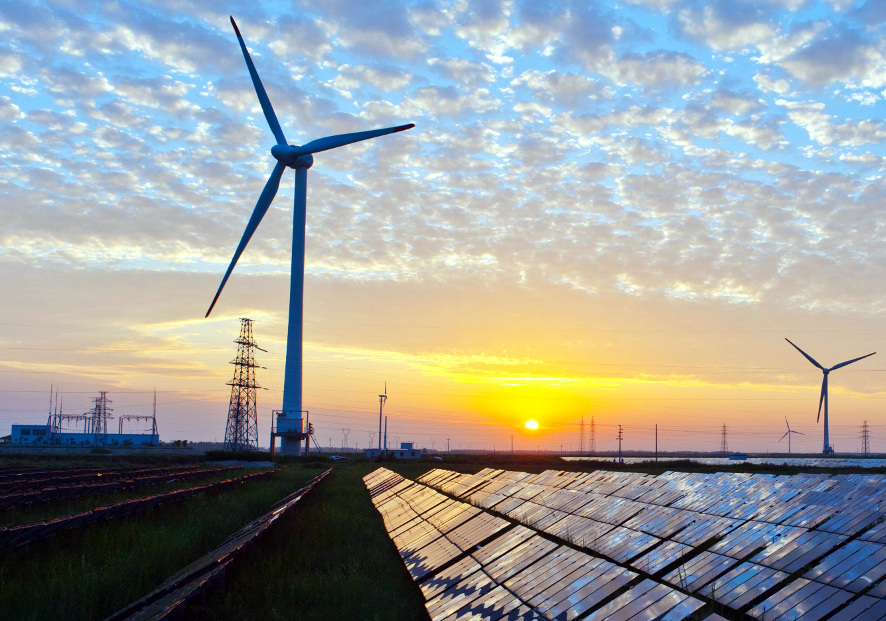Navigating the Conveyancing Process for Renewable Energy Properties
Purchasing a property equipped for renewable energy is a forward-thinking investment, reflecting a commitment to sustainability and innovation. However, navigating the conveyancing process for these properties can present unique challenges and considerations.
Whether you are a seasoned investor or a first-time buyer, understanding the nuances of this process is essential for a smooth transaction. In this article, we will delve into the specific steps involved in conveyancing for renewable energy properties, highlighting the importance of expertise in this niche field.
For those in the Southwest, enlisting the help of experienced conveyancing solicitors in Bristol can make all the difference, ensuring that every aspect of your purchase is handled with the utmost professionalism and care. From assessing the legal implications of renewable energy installations to navigating local regulations, our guide aims to equip you with the knowledge needed to confidently embark on your property journey.
Understanding Renewable Energy Properties
Renewable energy properties are those that incorporate sustainable energy solutions. These solutions not only contribute to reducing carbon footprints but also offer potential financial benefits. However, the integration of such technologies can introduce unique challenges during the conveyancing process.
Types of Renewable Energy Solutions
- Solar Panels
- Wind Turbines
- Geothermal Systems
- Biomass Heating
Each of these solutions can affect various aspects of property ownership. For instance, solar panels may come with leasing agreements that need to be transferred to the new owner, or wind turbines might require specific planning permissions.
The Conveyancing Process for Renewable Energy Properties
When dealing with renewable energy properties, the conveyancing process involves several additional steps compared to traditional properties. Here are the key stages you should be aware of:
1. Initial Enquiry and Due Diligence
Your conveyancer will conduct a thorough investigation into the property’s history and any existing energy agreements. This includes checking:
- Ownership and leasing arrangements for renewable energy installations.
- Compliance with local planning and building regulations.
- Potential subsidies or grants that may affect the transaction.
It is essential to ensure that all renewable energy systems comply with current regulations and that any financial incentives are properly documented. For more detailed information on renewable energy credits, consider exploring how they are regarded as property.
2. Contract Review and Negotiation
Once the initial enquiry is complete, the next step is to review the contract. This stage is where any discrepancies or issues identified during due diligence are addressed. Your conveyancer will negotiate terms to protect your interests, ensuring that all renewable energy aspects are clearly defined in the contract.
If you are selling a property, ensure that all documentation related to renewable energy installations is up-to-date and available for review. Buyers should verify that these installations meet their expectations and legal requirements.
For more information on the conveyancing process, you may find residential conveyancing solicitors helpful.
3. Completion and Post-Completion
Upon satisfactory review and negotiation of the contract, the final steps include the exchange of contracts and completion. During this stage, all legal and financial arrangements are finalised, and ownership is transferred.
After completion, it is crucial to ensure that any ongoing renewable energy agreements are properly transferred and registered with relevant authorities. This may include notifying energy providers and updating records with local councils.
4. Legal and Financial Implications
Renewable energy properties come with their own set of legal and financial considerations. It is essential to understand these implications to avoid any surprises after the transaction is completed. Here are some aspects to consider:
- Ownership and Leasing Agreements: Determine whether the renewable energy installations are owned outright or leased. Leasing agreements can complicate the transfer process and may require renegotiation.
- Subsidies and Incentives: Investigate any government subsidies or incentives that apply to the property. These can affect the property’s value and your financial planning.
- Maintenance and Upkeep: Renewable energy systems require regular maintenance. Ensure you are aware of the costs and responsibilities associated with maintaining these systems.
For a comprehensive understanding of renewable energy credits and their impact on property transactions, consider reading more about how renewable energy credits are treated as property.
5. Planning and Environmental Regulations
Compliance with planning and environmental regulations is crucial when dealing with renewable energy properties. These regulations can vary significantly depending on the location and type of renewable energy installation. Key considerations include:
- Planning Permissions: Verify that all necessary planning permissions have been obtained and are up-to-date. Unauthorized installations can lead to legal issues and potential fines.
- Environmental Impact Assessments: Some renewable energy projects may require environmental impact assessments. Ensure these assessments have been conducted and any recommendations have been implemented.
- Local Authority Regulations: Familiarise yourself with local authority regulations regarding renewable energy installations. These can affect both the installation process and ongoing operation of renewable energy systems.
For further details on the regulatory landscape, you can explore comprehensive resources on renewable energy regulations provided by local authorities.
Navigating the convincing process for renewable energy properties…
In conclusion, navigating the conveyancing process for renewable energy properties requires careful consideration and specialised knowledge. By understanding the unique challenges and steps involved, you can ensure a smooth and successful transaction.
Ultimately, renewable energy properties offer numerous benefits, including reduced environmental impact and potential financial savings. However, the complexities involved in their conveyancing process necessitate a thorough and informed approach. By following the guidelines outlined in this post, you can navigate the process with confidence and secure a property that meets your needs and expectations.
Share It on :





